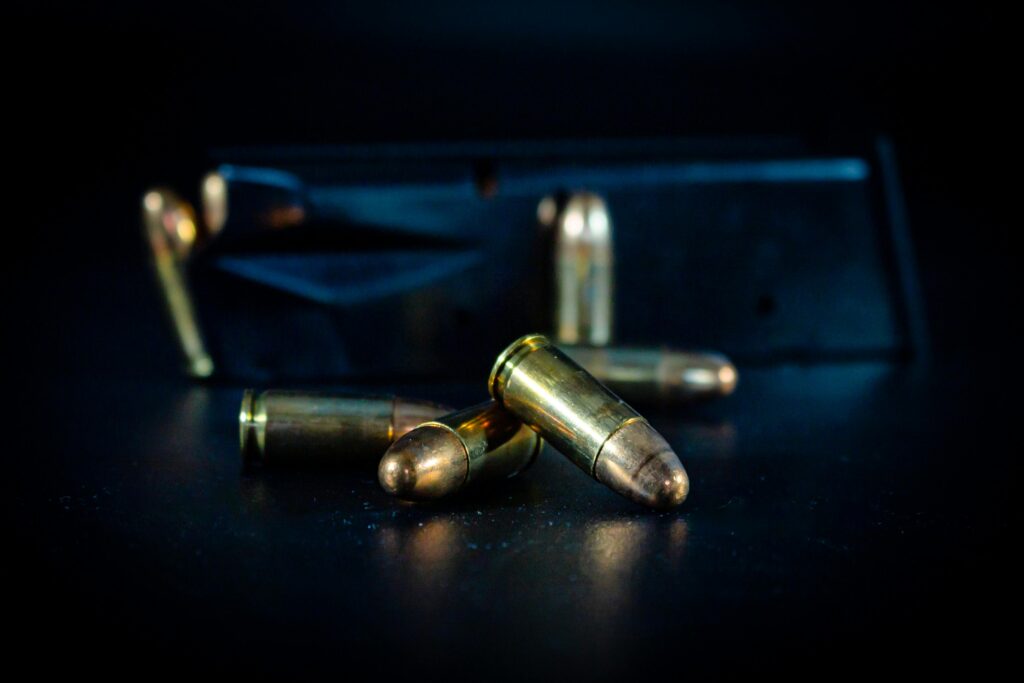Now Reading: Post –mortem report and it’s particulars in forensic science
-
01
Post –mortem report and it’s particulars in forensic science
Post –mortem report and it’s particulars in forensic science
Abstract
A post –mortem examination, well known as an autopsy, is a critical way of examination of a body after death. In a post-mortem examination it is important to aim to determine the particular cause of death. Post-mortem is carried out by pathologists these doctors are specialized in understanding the nature of death and the causes of diseases. [1]Post- mortem provide a lot of information in the matter of how, when, why and possibly where that someone died. They enable pathologist to obtain the a better understanding of how the death may have occurred. They learning on the cause of substainily death and learn on the possible injuries and the manner of death. Learning the more about the illness or the cause of death which builds to explain the important bring about justice to the court. The possible post mortem report required in the court of law is to document the finds done in the court justice to bring the information regarding the cause of death.
Introduction
Post mortem and other medico-legal examination are carried out, in India by the government medical officers working as medical practitioners in various institutions of the locality, in most of the states. The post mortem examination is an extremely important step in the handling of the evidence of death episode. It explains the cause, nature, location and the time of death. Ascertain the nature of weapon, number of assailants and determine the sequence of event of incident. This determines the evidences of collection for the further examination. Determining the new occurrence of the possible causes of death and advance methodology of death occurrence.[2] In short post mortem examination is necessarily recorded as it has the primary findings of criminal justices. It establishes the corpus delicti, the modus operandi, the links between the criminal and the crime.
External examination
There is important considerate amount of examination taken when it comes to the factors regarding external examination when it comes to post mortem examination for reporting. It mainly consists of the following factors. [3]
Mainly the examination of clothing found, where there is any possible stains, soiling material, foreign materials, any cut marks, blood splatter, stab marks or semen sample etc.
· Identity of the person, in case of known body, police I involved by being a part while identify body. If there is possibility the relatives can be also be asked to identify the body. For an unknow body, they are checked for an identification mark like mole, tattoo, scars, fingerprints or even documents if carried like license or ID card. The investigation officers are asked to take photographs and fingerprints of body.
· Preliminary particulars
· Like the basic information regarding the individuals height, weight, build, gender, race, pattern of hair, color of hair, any stains, presence of any foreign body like mud, soil, glass, paint etc. should be notes.
· Rigor mortis should be noted stating the presences or absence.
· Post mortem lividity with regards to the appearance, fixed, site, discolorations etc should be noted.
· Presence or absence of sign of decomposition, the presences of maggots, larvae, eggs should be recorded.
· The features of identifiable, distortion or the possible bloating shall be noted.
· Skin and the body surface should be properly examined for any dermatological lesion, any infections, foreign materials, mud, grease, etc. Dermal lesions may be in form of pustules, infections, boils, macular lesions, bleeding spots, edema, etc , should be observed. [4]
· Perceive for any sort of odour emitting from body, example due to insecticide, garlicky, fermentation etc. This could indicate the possible location or the type of dead that took place.
· The state of natural orifices such as nose, mouth, vagina, anus, etc. should be checked for the possible infection or injuries or even foreign bodies, that may indicate the type of death.
· Documentation of injuries are very important part as they are a form of a record. This is important to signify the injuries which are caused. The injuries explains the type of tool used or weapon used. Injuries like abrasion, contusion, laceration, incised, stab, burn, injury, etc. should be looked forward to be recorded. The injuries should be described in a sequential manner for top to bottom. The injuries should be notes properly with consequence of size, site and dimensions to the axis of body and relations from the fixed anatomical landmarks.[5] The dimensions of the injury should be recorded in metric system. The shape should properly described. The state of the margins, angle with depth of wound along with direction should be recorded which proper reference.
· External genitals examine to know the presence of injuries, secretion and any signs of sexual assault. [6]
Internal examination
Internal examination including dissection and proper examination even at these regions :
1. Cranial cavity
2. Thoracic cavity
3. Abdominal cavity
4. Dissection of spinal cord (when indicated)
5. Dissection of extremities (when indicated)
It is important to pinpoint the different findings in the post mortem examination. These examination information are properly recorded. The foci of extravassted blood from burst capillaries in areas of intense livor may be caused by hemorrhages. [7]Edema of conjunctiva, which is commonly finding after death from compression of the neck. This artifact maintained depends on the position of the head. Punctate hemorrhages maybe misinterpreted that are found beneath the scalp when it is reflected from peri-cranium. The fine vessels passing from the subcutaneous layer of the scalp into peri-cranium are full of blood. When scalp is reflected with torn and hemorrhages indistinguishable from different antemortem ones may be produced. Post mortem hypostasis of internal organs may simulate antemortem contusion. The banding esophagus may be due to the tissue are congested. These bands are pale areas in mucosa caused by postmortem hypostasis which maybe a regional anatomical architecture and curves of esophagus. These bands maybe also mistaken to be injuries. Rigor mortis of the heart may simulate concentric hypertrophy of the heart. [8]
Which cavity should be opened first is that depending on the requirement and convenience of autopsy surgeon, any cavity can be opened first. However, in fetus, usually abdominal cavity is opened first to record the position of diaphragm.
Post Mortem Reports
Medico-legal reports are the documents prepared and issued by doctors on the request of the investigating officer (Police or Magistrate), usually in criminal cases such as assault, rape, murder etc.
• Examples of such reports are: Injury certificate, age report, postmortem reports, reports regarding examination of exhibits such as weapons, clothes etc.[9]
• Generally these reports are made of three parts viz:
1. Part I – Introduction (Preamble): Comprising of preliminary data such as name of person, age, sex, address, identification marks, date and time of examination etc.
2. Part II – Examination (Observation): Consisting of the findings observed and recorded by doctor and entered in the report.
3. Part II – Opinion (Inference): Consisting of opinion or inference drawn by the doctor from the medical examination.
The report should be written with great care and have the signatures of the required doctors and the examining professionals. Any exhibits, e.g. clothes or weapons etc. sent for medical examination should be described in detail with appropriate diagram/sketches whenever applicable then these articles should be properly signified. [10]
Conclusion
The post-mortem findings are not only important to the prospecution but they are equally important to the defense and to the court. The medico-legal expert are equally there prepares the postmortem report on a standard from to cover the vital information. The format is usually comprehensive and cover most of the needs. The additional information or clarifications are needed the expert provides the same in writing or at that time of oral evidence in the court. However, there is an ample of scopes to improve the PMRs. Better description, better illustrations with photographs and less use of technical terms can go a long way. It’s important in the point of court of law to give the description of the possible cause of death.[11]
[1] Saukko P, Knight B. The forensic autopsy. In: Knight’s Forensic Pathology, 3rd edn. 2004. Arnold, London. 1 – 51.
[2] . Rao NG. Postmortem examination. In: Textbook of Forensic Medicine & Toxicology, 1st edn. 2006. Jaypee Brothers Medical Publishers (P) Ltd., New Delhi. 137 – 56.
[3] Gilliland MGF, Bost RO. Alcohol in decomposed bodies. Postmortem synthesis and distribution. J Forensic Sci 1993;38: 1266 – 74.
[4] Schwartz HJ, Squillace DL, Sher TH, Teigland JD, Yunginger JW. Studies in stinging insect hypersensitivity: postmortem demonstration of antivenom IgE antibody in possible sting-related sudden death. Am J Clin Pathol 1986; 85: 607 – 10.
[5] Saliba NA, Maya G. Air embolism during pneumoperitoneum refill. Am Rev Respir Dis 1965; 92: 810 – 12.
[6] Murty OP. Forensic photography. Int J Med Toxicol Legal Med 2001; 3: 4 – 12.
[7] Gandhi R, Patnaik KA. A study of organ enzyme concentrations in relation to time of death. J Forensic Med Toxicol 1997; 14: 5 – 8
[8]Gurumukhi J, Sinha A, Murari A, Sharma GK. Role of pericardial fluid enzymes in estimation of time since death. J ForensicMed Toxicol 2001; 18: 22 – 7.
[9] Robert V, Stewart MD. Postmortem diagnosis of myocardial disease by enzyme analysis of pericardial fluid. Am J Clin Pathol 1984; 82: 411 – 7.
[10] . Luna A, Carmona A, Villanueva E. The postmortem determination of CK isoenzymes in the pericardial fluid in various
[11] Vallejo G. Human chorionic gonadotropin detection by means of enzyme immunoassay: A useful method in forensic pregnancy diagnosis in blood stains. J Forensic Sci 1990; 35:
Author- Sharon Dinil Kumar (Forensic Intern, Legal Desire Virtual Internship October 2020)








